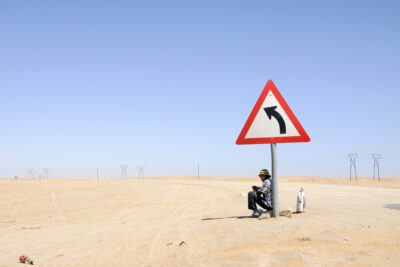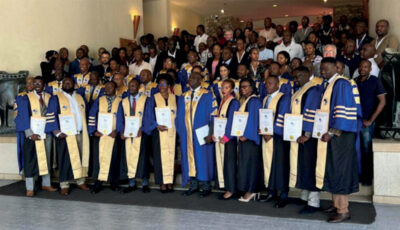Main content
Last month, we visited one of our surgical students (CapaCare surgical training programme) in a government district hospital here in the northern province of Sierra Leone and the atmosphere was grim. A woman in the third trimester of her pregnancy had just passed away. She suffocated due to the consequences of peri-mandibular cellulitis with airway compression (sometimes referred to as Ludwig Angina). The local medical team had tried their best with the limited local options available but their efforts were not successful.
We present a similar case and the results of a case series showing that what happened to this woman is not an exception.
Case presentation
A 21-year-old male with no past medical history presented with a large bilateral submandibular swelling (Fig. 1a). He had a toothache for one week and visited a traditional healer who had prescribed a topical herbal medication. On admission, the patient was alert, circulatory stable and afebrile but had difficulty breathing; there was a stridor on inspiration, and the maximum mouth opening was 30mm (interincisal distance), and pus was seen draining into the oral cavity. The Hb level was 15.3 g/dL.
A diagnosis of peri-mandibular cellulitis with airway compression was made, and intravenous antibiotics were administered (ceftriaxone 2g od, metronidazole 500 mg tid and gentamicin 320 mg od). Because of the stridor, single-dose dexamethason 10 mg IV was administered, followed by 4 mg IV qid. In addition, the patient was nebulized with adrenaline in normal saline solution. The right-sided submandibular abscess was incised and drained.
One day after admission, the patient deteriorated, with O2 saturation dropping to 69% and prolonged apnoea periods. During an emergency cricothyroidotomy, the previous incision on the right was extended to enhance drainage of pus (Figure 1b). Three days later, there were crepitations and swelling in the left supraclavicular region, and an incision and drainage as well as a necrotectomy were performed. On day 6 after admission, the patient was stable and the tracheostoma was removed. He made an uneventful recovery, with the prominent complaint of excess of saliva in the mouth cavity and trismus, both improving over the next 3-4 weeks.
Three weeks after admission the mouth opening was sufficient for removal of an infected and decayed molar. Six weeks after admission, the patient was discharged with a mouth opening of 40 mm (Figure 1c). At that time, he received paracetamol for gum pain; his wounds were not fully granulated yet. Six weeks after discharge the patient was consulted by phone, and no complications were reported.
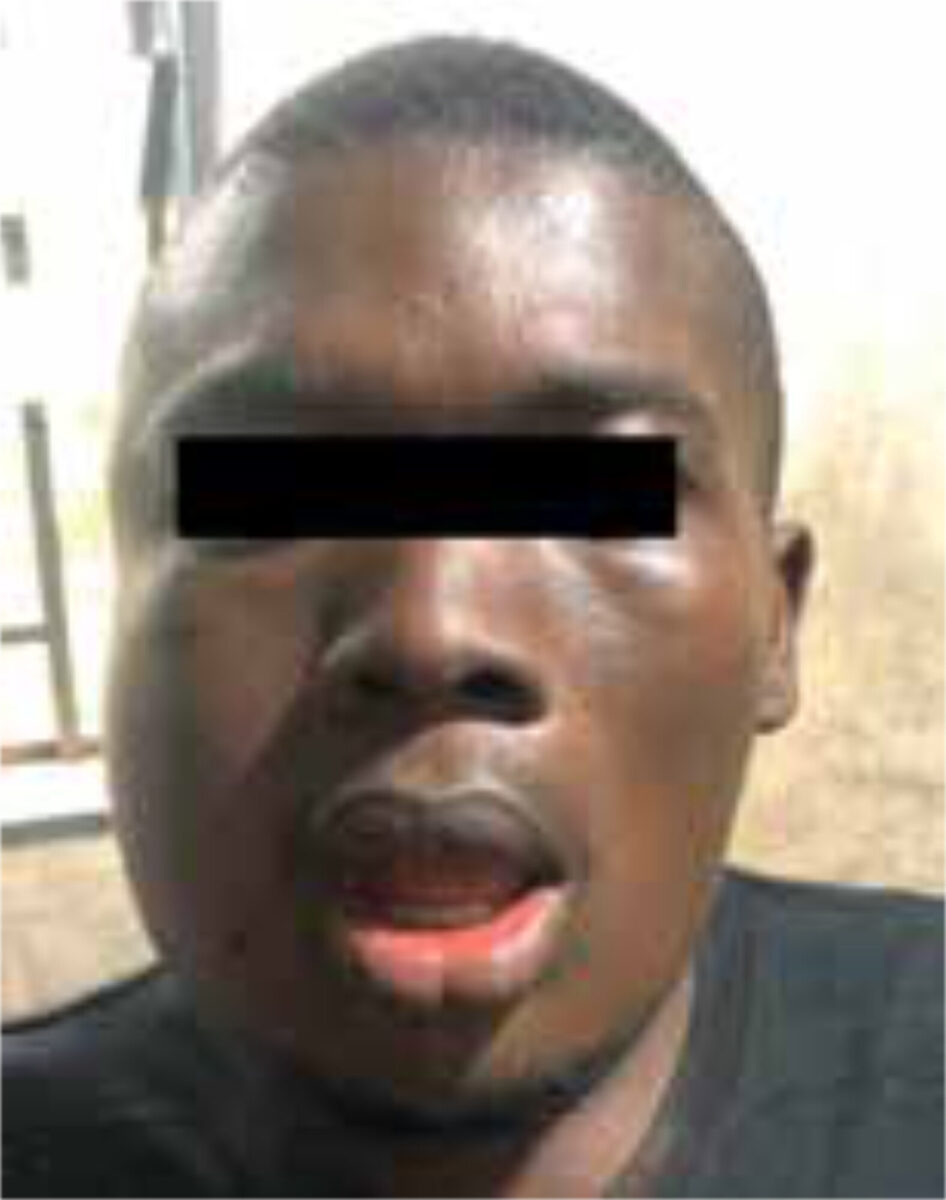
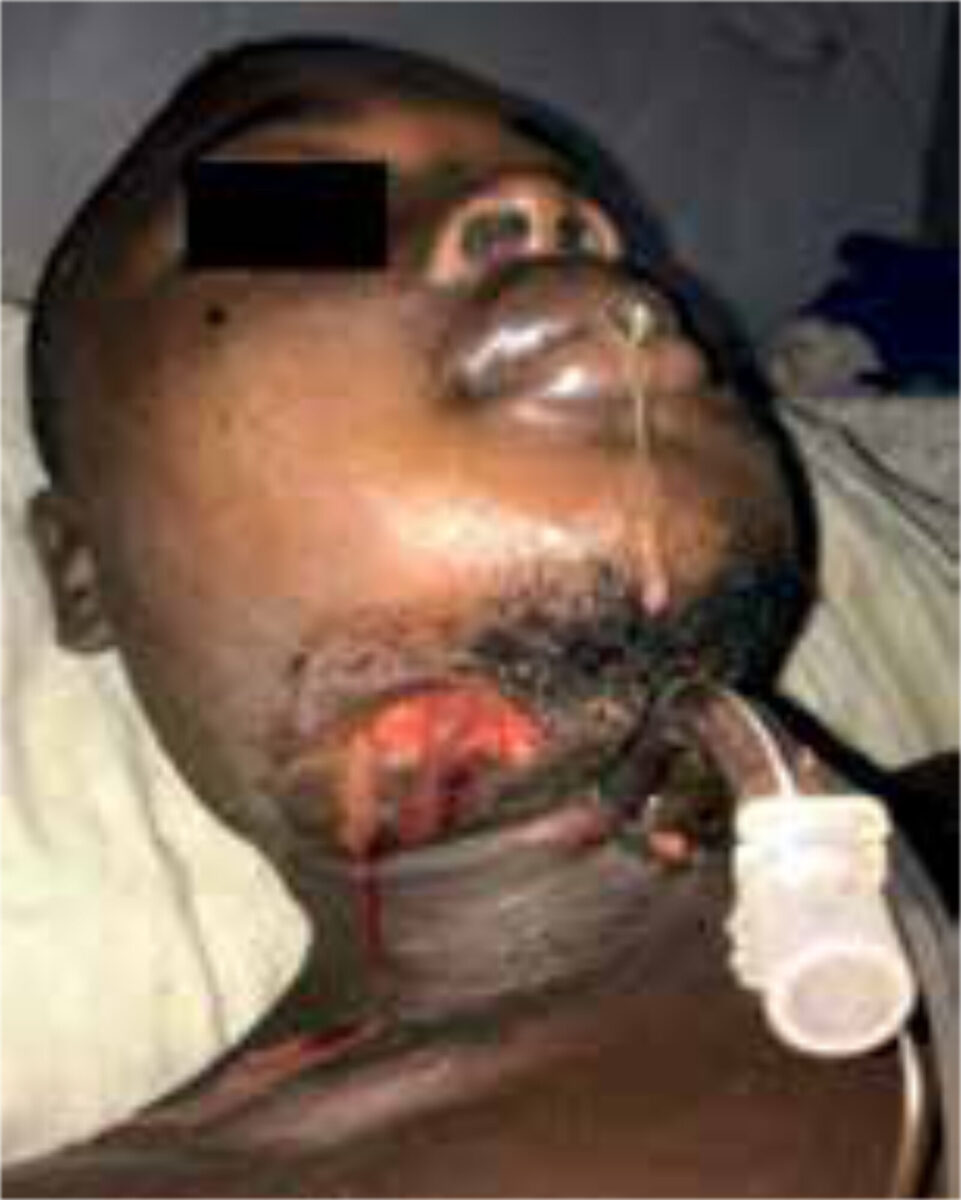
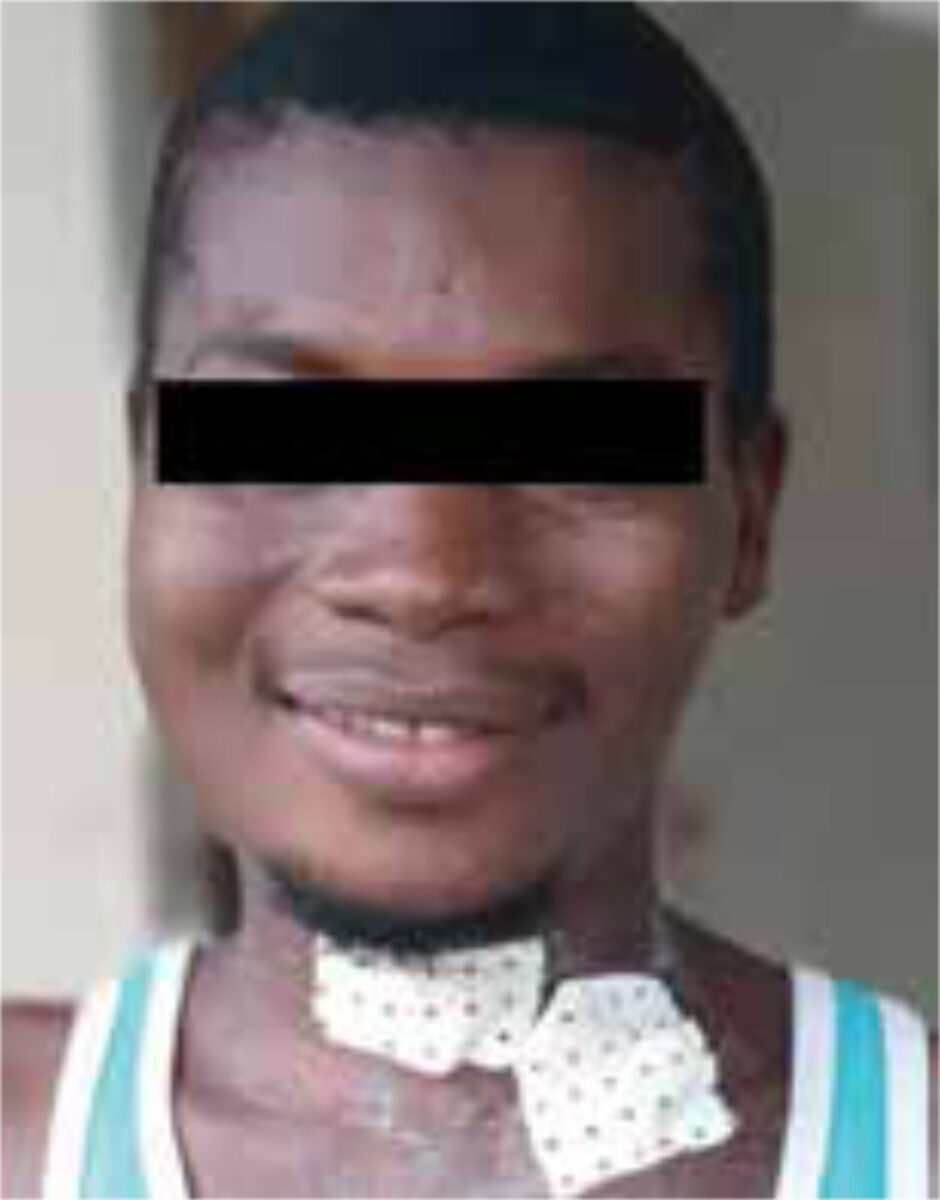
Case series
Prevalence data on severe dental infections are scarce, particularly for low-income countries. We have collected data on patients presenting with complications of dental abscesses between September 2020 and December 2020 in Masanga Hospital and Lion Heart Medical Centre in Tonkolili District, Sierra Leone. A total of 20 patients were listed; the median age was 28 years, and 65% were male. Thirty % showed evidence of sepsis, 24% required a tracheostomy, and the mortality rate was 45%. This case series illustrates the severity of the dire consequences of the absence of access to basic dental and oral hygiene care.
Dental caries and infiltration of bacteria in the dental root system can subsequently lead to dental abscesses.[3-6] Well known risk factors for developing caries include a high sugar intake, bed-time infant feeding, smoking, lack of regular tooth cleaning and lack of access to fluoridated water and / or tooth paste.[3,7] In this case series, 80-100 percent of participants reported brushing their teeth daily with toothpaste.[2] The rise of sugar soda consumption and the lack of knowledge about the dangers of such drinks may be a contributing factor to developing caries and subsequently serious disease. In this case series, the majority of individuals did not report drinking soda regularly, but the timing of consuming sweet products (i.e. after toothbrushing) could have played a role.[2,8,9] However, the high mortality rate warrants a look at the bigger picture here.
Socioeconomic status relates directly to prevalence and sever-ity of oral diseases via multifactorial pathways (Figure 2).[7,9-12] Suboptimal nutritional status to begin with, lack of knowledge of oral health and lack of dental care services all contribute to the poor state of oral health in Sierra Leone.[9,10,12] Financial hardship makes people only seek healthcare when there is no alternative.[2,10] With a potential fulminant disease such as caused by dental abscesses, having access to appropriate care is important. The so-called three-delay-model is a good tool to analyse this group (delay in decision to seek help, delay in arriving at a health facility, and delay in provision of adequate care).[13] Health seeking behaviour in the ‘preventive period’ was influenced by unknown educational and financial factors; all patients were already expe-riencing tooth pain over several weeks before seeking help.[2] When resources and geographical circumstances made it possible for people to seek help, 70% of the population studied here first visited the traditional healer.[2] These traditional healers were therefore not the solution, but actually added to the delay.[2,10,11]
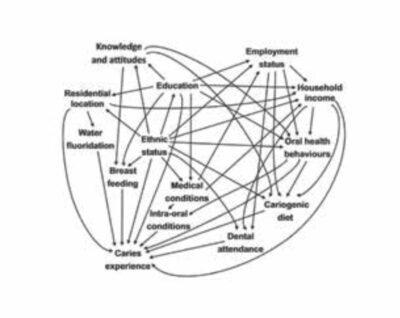
Discussion and way forward
There are few dentists in the country, who are mainly situated in the Western Peninsula and urban areas; the majority of the population does not have access to basic dental care.[14] Dental Health International Netherlands (DHIN) started an initiative to train hospital dental workers to perform tooth extractions, and some hospitals are now providing these services. Nevertheless, only few patients are presenting. Some patients still believe pulling a tooth can cause deafness or blindness, and neither patients nor traditional healers seem to be aware of the high incidence of catastrophic outcomes in case of a severe odontogenic infection.[2] To tackle this silent catastrophe, the government of Sierra Leone and its partners should put oral health just as high on their agenda as maternal and child health. We support the WHO suggestion for settings as the one described here to include oral health in the Universal Health Coverage. This should help re-orient oral health policy away from a conventional model of dentistry towards a preventive model of care that promotes oral health and is integrated into health systems at all levels.[12,15]
In Masanga hospital and Lion Heart Medical Centre, we will continue to look at this population closely. The prospective observational cohort study (DELAY)[16] was constructed to get a better understanding of risk factors and/ or contributing factors that increase the likelihood of developing severe odontogenic infections in the Tonkolili District population. It started with including patients that were admitted to Lion Heart Medical Centre or Masanga Hospital as of 4 September 2021. In DELAY, participants are asked about their soda drink consumption as well as their dietary intake and toothbrushing habits. Participants are asked whether they have visited a traditional healer and, if so, why they went there first. Treatment and outcome are registered, and follow-up takes place until three months after discharge. Data collection at both study sites is expected to continue until August 2022, after which data analysis will take place. We hope to gain insight into contributing factors leading to disease progression and possible interventions that can be established to prevent morbidity and fatal outcome. Current mortality rates for this preventable disease are unacceptable, and we hope that our studies will contribute to increased public awareness and political willingness to integrate oral health into the Sierra Leonean health system at all levels.
References
- About – Capacare. Accessed March 26, 2022. https://capacare.org/about/
- Roemers R, Sesay AI, Sesay MG, et al. Case Report: Severe Dental Abscess Complications in Rural Sierra Leone. Am J Trop Med Hyg. 2021;106(2):550-555. doi:10.4269/AJTMH.21-0923
- Ogle OE. Odontogenic Infections. Dent Clin North Am. 2017;61(2):235-252. doi:10.1016/J.CDEN.2016.11.004
- Ortiz R, Espinoza V. Odontogenic Infection. Review of the Pathogenesis, Diagnosis, Complications and Treatment. Res Rep Oral Maxillofac Surg. 2021;2021:55. doi:10.23937/2643-3907/1710055
- Pak S, Cha D, Meyer C, Dee C, Fershko A. Ludwig’s Angina. Cureus. 2017;9(8). doi:10.7759/cureus.1588
- Blankson PK, Parkins G, Boamah MO, et al. Severe odontogenic infections: A 5-year review of a major referral hospital in Ghana. Pan Afr Med J. 2019;32. doi:10.11604/pamj.2019.32.71.17698
- Anil S, Anand PS. Early Childhood Caries: Prevalence, Risk Factors, and Prevention. Front Pediatr. 2017;5. doi:10.3389/FPED.2017.00
- Risk Factors for Early Childhood Caries: A Systematic Review and Meta-Analysis of Case Control and Cohort Studies – PubMed. Accessed March 26, 2022. https://pubmed.ncbi.nlm.nih.gov/30992106/
- Foley M, Akers HF. Does poverty cause dental caries? Aust Dent J. 2019;64(1):96-102. doi:10.1111/ADJ.12666
- Wilson S, Bah MM, George P, et al. Challenges and solutions to providing surgery in Sierra Leone hospitals: A qualitative analysis of surgical provider perspectives. BMJ Open. 2022;12(2). doi:10.1136/BMJOPEN-2021-052972
- Almaguer Acevedo FM, Hernandez Cervantes BY, Ketemepi GVD, Martinez Lopez D. Cervicofacial necrotizing fasciitis after topical application of herbal medicine. J Surg case reports. 2021;2021(11). doi:10.1093/JSCR/RJAB481
- World Health Organization. WHO | Oral health. Who. Published online 2016.
- Thaddeus S, Maine D. Too far to walk: Maternal mortality in context. Soc Sci Med. Published online 1994. doi:10.1016/0277-9536(94)90226-7
- Ghotane SG, Challacombe SJ, Gallagher JE. Fortitude and resilience in service of the population: a case study of dental professionals striving for health in Sierra Leone. BDJ Open. Published online 2019. doi:10.1038/s41405-019-0011-2
- Universal health coverage. Accessed June 14, 2020. https://www.who.int/health-topics/universal-health-coverage#tab=tab_1
- Hazenberg HMJL, Dubbink JH, Sesay I, et al. Complicated Odontogenic Infections at 2 District Hospitals in Tonkolili District, Sierra Leone: Protocol for a Prospective Observational Cohort Study (DELAY). JMIR Res Protoc. 2021;10(12). doi:10.2196/33677


















































